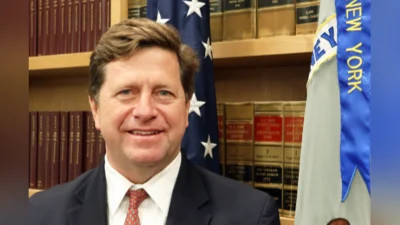In the aftermath of the tragic deaths of 19 Arizona firefighters on June 30th, concerns about the United States’ ability to prevent and contain wildfires have grown. The Yarnell Hill fire in Arizona is one of 22 uncontained large fires that are currently burning across the country. Over 1.6 million acres have burned so far this fire season, with months of summer yet remaining.
Below is a summary of the issues surrounding climate change, wildfires, and firefighting budgets. The Democratic staff of the Natural Resources Committee is available to answer additional questions during what is shaping up to be a heightened wildfire season.
WILDFIRES INCREASING WORLDWIDE, IN U.S.:
Large wildfires have increased worldwide over the past 40 years, particularly in the western United States. Fueled by strong winds, dry conditions, and lightning strikes, fires are also becoming increasingly severe. Since 2000, at least 10 states have had their largest fires on record, and some have had their records broken more than once.
Large wildfire activity increased suddenly and markedly in the mid-1980s, with higher large-wildfire frequency, longer wildfire durations, and longer wildfire seasons. Researchers linked these changes to a warming climate, with fires in the Northern Rockies strongly associated with increased spring and summer temperatures and an earlier spring snowmelt. Because of climate change, the USDA predicts that wildfires in the United States will be twice as destructive by the mid-21st century.
TEMPS INCREASING, MOISTURE DECREASING, SETTING CONDITIONS FOR WILDFIRE OUTBREAKS:
The effect of climate change on wildfire is primarily driven by increases in temperature. Longer summer periods dry fuel, which promotes easier ignition and faster spread. For these reasons, the Intergovernmental Panel on Climate Change (IPCC) concluded that climate change is projected to increase the impacts of fire on forests, with longer fire seasons and large increases in burned area. These changes are already apparent in the western United States, where the wildfire season has increased by 78 days, and burn durations of fires greater than 2,400 acres have increased from 7.5 to 37.1 days. Furthermore, between 1970 and 2003 spring and summer moisture availability declined in many forests in the West; most major wildfires occurred in these same drought stricken areas. Finally, snowpacks are now melting 2 to 4 weeks earlier throughout much of the West, which extends the summer dry period and puts more forest area at risk of fire. The draft U.S. National Climate Assessment notes that “western forests in the United States will be increasingly affected by large and intense fires that occur more frequently" given climatic changes projected in the future.
The climate models evaluated by the IPCC indicate that precipitation is projected to decrease further in the southwestern United States while the frequency and intensity of drought will increase. Dry climates are already becoming drier worldwide. High temperatures combined with drought cause trees to die faster thus even short droughts at elevated temperatures due to climate change can trigger tree mortality. Drought also leads to increased flammability of live and dead fuels and increased susceptibility to a number of insects, particularly the bark beetle. However, despite killing a large number of trees, the best available science suggests that insect infestation does not lead to increased wildfires. Rather, drought conditions lead to both fires and insect infestations, which then occur simultaneously.
WILDFIRES STRAINING FIREFIGHTING BUDGETS:
Beyond the heavy toll of fires on communities, wildfires have a large price tag for the American taxpayer. In FY 1991, fire-related activities accounted for about 13 percent of the Forest Service budget; by FY 2012, it was 40 percent. For example, the federal cost of fighting fires (i.e. fire suppression) in the United States has averaged in excess of $1.4 billion annually over the past four years, with the 2012 fire season costing taxpayers close to $2 billion, $400 million of was beyond the Forest Service’s budget. The President’s FY 2014 budget proposes $2.0 billion for wildland fire management, a 3.8% increase from the FY 2013 continuing resolution. However, this budget has been criticized for cutting funding to prevention-focused programs such as the Hazardous Fuels Reduction Program. Given the losses in Arizona and the destructive potential of this year’s fire season, U.S. fire suppression forces could be vastly undermanned and underfunded.
CLIMATE CHANGE AFFECTING AMERICA NOW:
If we are serious about reducing catastrophic wildfires, we first need to admit that there is a link between climate change and wildfires. Continuing to deny reality will only put more lives and property at risk. In July of 2012 Joseph Romm said when testifying before the House Committee on Natural Resources, “We can barely manage the wildfires we have today. How exactly would much of the West ‘manage’ a 4-fold to 6-fold increase in wildfires? And that’s just from a 1.8°F increase in temperatures. Again, we could see 5 times that this century."








